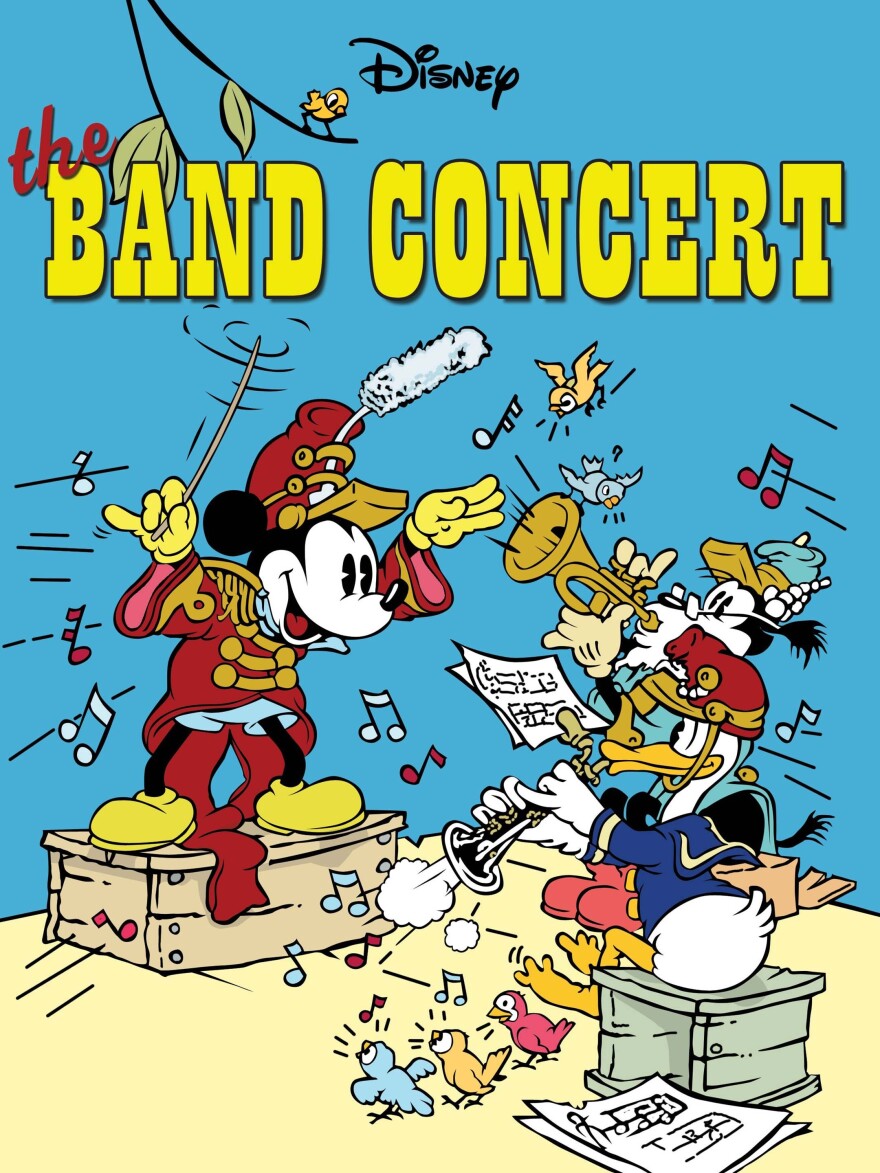It’s outdoor concert season again!
Whether you’re heading to Tanglewood to hear the Boston Symphony Orchestra, the Hatch Shell for the Boston Pops, or sitting in traffic trying to get into the Xfinity Center (long live Great Woods), the recipe’s familiar: open air, packed programs, and a great time.
A year before Koussevitsky conducted the Boston Symphony's first concert in the Berkshires, Walt Disney gave us the ultimate open-air concert experience, featuring a mouse with a baton, a duck with a squabble, and a tornado that keeps perfect time. Premiering in 1935, The Band Concert wasn’t just Mickey’s first technicolor short; it was a breakthrough in how animation and classical music could work together.
When the cartoon opens, Mickey’s concert band has just wrapped up a bit from Ferdinand Hérold’s opera Zampa. The crowd is cheering as the band settles in for the main event, Rossini’s William Tell Overture. Mickey raises his baton. The music begins. And almost immediately, Donald Duck shows up.
He’s not in the band, though. He’s definitely not in the program. He is, however, selling ice cream.
When Donald sees the band, he decides to play along, and starts playing Turkey in the Straw on a piccolo. The rest of the band follows along, and in no time, they’re supporting Donald’s “turkey.”
From that moment, the performance slowly spirals into chaos: Donald refuses to leave, the musicians fall apart, and eventually, a tornado hits. Yet somehow, the music never misses a beat.
Six years earlier, Disney had debuted The Skeleton Dance, the first in its “Silly Symphonies” series. In that cartoon, Carl Stalling composed an original score, with a few quotes from Grieg, to match the completed animation. Sound, in this case, followed the image.
The Band Concert flipped that process. Instead of scoring after the animation was done, the animation was planned around an arrangement of an existing work pulled together by Disney music department head Leigh Harline: Rossini’s William Tell Overture.
This shift may not sound dramatic now, but in 1935, it was a bit of a technical flex. Animating to an existing score meant every gag had to land at just the right moment, and every movement had to respect the phrasing, tempo, and structure of the music Rossini had written over a century earlier.
Rossini’s overture opens with a gentle dawn, builds to a storm, settles into pastoral calm, and ends with a galloping finale. Each section gave Disney’s animators a clear dramatic arc. And, maybe just as importantly, by the 1930s the William Tell Overture had become a staple of American bandstands. With Rossini, Disney was giving the audience something familiar in a new way (a strategy he’d use again a few years later with Snow White).
Even if you’ve never seen Disney’s The Band Concert, you’re probably still familiar with the William Tell Overture. While it’s better known as the heroic fanfare of “The Lone Ranger” radio and TV series, the William Tell Overture has popped up elsewhere in animation, like in Warner Brother’s “Looney Tunes” series. In Bugs Bunny Rides Again (1948), the Overture (fittingly) accompanies a galloping horse chase.
Yankee Doodle Daffy (1943) features a different kind of chase, with Daffy Duck singing made-up lyrics to the tune of the Overture as he chases after Porky Pig. (And adds a bit of Offenbach's Can-Can to boot.)
The Band Concert isn’t just a great cartoon. It’s a cartoon that trusted the music to carry the weight of the story, and it showed that classical music could be bold, dramatic, and silly, too.
And yes, it proved one other thing. Sometimes, even a duck with a piccolo can have great comic timing.
————————
Bootleg online copies aside, "The Band Concert" is currently only available at Disney+.



